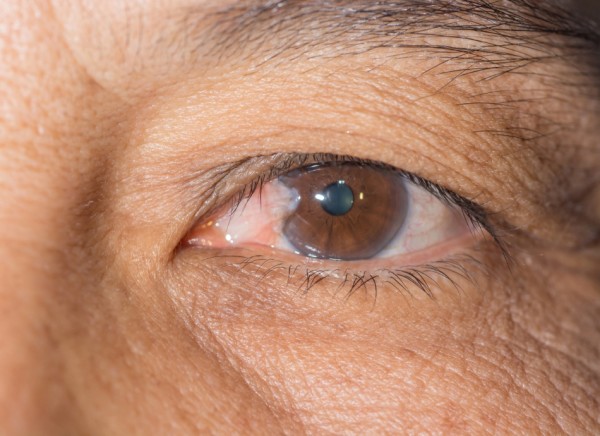Wishing everyone a safe and happy Christmas and New Year – Meri Kirihimete from the Healthify team.
Pterygium
Key points about pterygium
- A pterygium is an eye condition that’s also known as 'surfer's eye'.
- It's a growth on the white part of your eye, usually in the inner corner nearest your nose.
- People who work outdoors or spend a lot of time in the sun and wind are most likely to get it.
- It’s not cancerous and treatment is offered when it affects your vision or causes severe discomfort.
- You can reduce your chances of getting a pterygium by wearing sunglasses and a hat when you're out in the sun.

A pterygium is a growth on the white part of your eye that usually starts in the inner corner nearest your nose, though this can also arise from the side nearer the ear.
It’s a very common condition in Aotearoa New Zealand. People who work outdoors or spend a lot of time in the sun are most likely to get a pterygium. You can get them in one or both eyes.
It’s not cancerous and doesn't usually require treatment unless it's interfering with your vision or causing recurrent inflammation and severe discomfort.
Treatment includes simple lubrication for comfort, or surgery if your eye doctor thinks it's a good option for you.
You can reduce your chances of getting a pterygium by being sun smart. Simple measures such as wearing sunglasses and a hat when you're out in the sun can be quite effective.
The main sign of a pterygium is a raised, wedge-shaped bump on the surface of your eye.

Image credit: Depositphotos
You may also have:
- eye redness
- a burning feeling in your eye
- a gritty feeling, as though there is something in your eye
- dryness in your eye
- a need for a change in your glasses.
You’re at most risk if your eyes are exposed to a lot of ultraviolet (UV) light from the sun, such as when doing outdoor work and leisure activities.
Usually, a pterygium can be diagnosed by your healthcare provider, optometrist or an eye doctor examining your eye and eyelids.
A pterygium doesn't usually cause any problems and won't need treatment. However, it's important to have it monitored by your eye care provider. If the pterygium continues to grow and begins to affect your vision, or causes ongoing eye discomfort, you may need treatment.
Medicine
Your eye care provider may recommend artificial tears or eye drops to reduce your discomfort. If the pterygium is inflamed, they may also prescribe anti-inflammatory eye drops.
Surgery
Your eye care provider may recommend surgery if your vision is affected or if medicines don't give you enough relief.
The surgery involves removing (peeling away) the pterygium from the sclera (white) and cornea (transparent outer layer) of your eye. The area is then covered with a small graft of your own healthy conjunctiva (the surface tissue covering the sclera).
The surgery is usually performed under local anaesthetic, and takes about half an hour. A pad is placed over the eye and as you won't be able to drive for a while, you'll need transport home.
You shouldn't feel any pain during the procedure, but it's normal for your eye to feel scratchy for a few days afterwards, and you'll need a day or two off work.
You'll need to use eye drops for about a month after the surgery to help your eye heal. After surgery, wear protective glasses and a hat with a brim to prevent the pterygium from returning. About 5% of people who have had this surgery (1 in 20) get another pterygium.
Your glasses may need to be upgraded after the surgery.
To reduce your chance of getting a pterygium:
- wear UV protective sunglasses when you're outside
- wear a wide brim hat when you're outside
- take extra care to protect your eyes if you spend a lot of time on the water or snow.
References
- Pterygium – what is surfer's eye?(external link) Auckland Eye, NZ, 2019
- Pterygium and pinguecula(external link) Eye Institute, NZ, 2020
- Surgical treatment of a pterygium(external link) The Royal Australian and New Zealand College of Ophthalmologists, 2019
- What is a pinguecula and a pterygium (surfer's eye)?(external link) American Academy of Ophthalmology, US, 2024
Credits: Healthify editorial team. Healthify is brought to you by Health Navigator Charitable Trust.
Reviewed by: Dr Chi-Ying Chou, MBChB, FRANZCO, Specialist, Auckland Eye Institute
Last reviewed:





